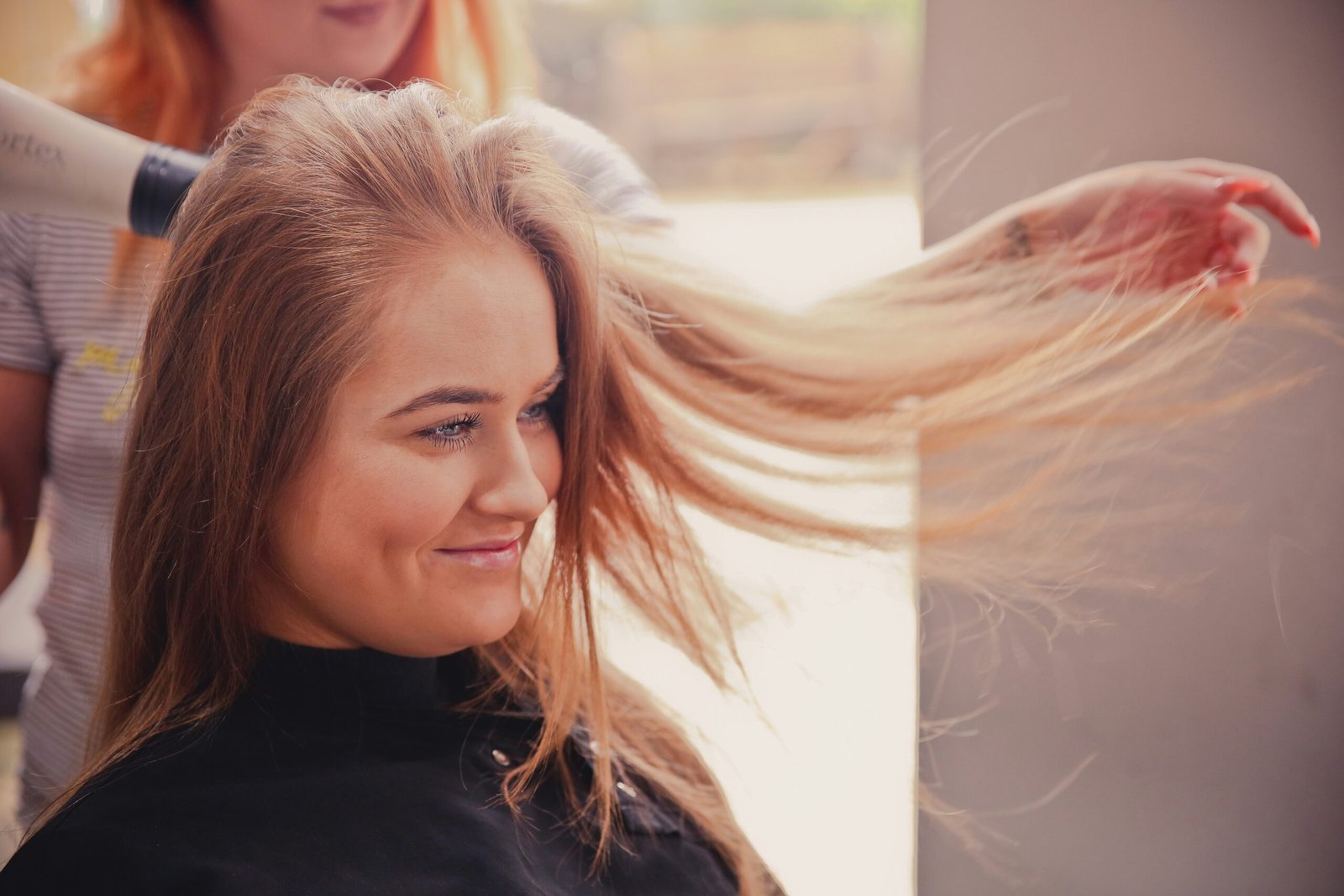Understanding Your Hair Type
Determining your hair type is fundamental for choosing suitable hairstyles and care methods. Hair can be broadly categorized into four main textures: straight, wavy, curly, and coily. Each texture presents unique characteristics that require tailored approaches for optimal care and styling. Understanding these differences is crucial for maintaining healthy hair and achieving desired looks.
To assess your hair type, consider three key factors: thickness, porosity, and density. Thickness refers to the diameter of individual hair strands, which can range from fine to coarse. Fine hair tends to be more delicate and may require lighter products, while coarse hair can withstand heavier styling products and techniques. Porosity describes your hair’s ability to absorb and retain moisture, which can be categorized as low, medium, or high. Low porosity hair may resist moisture absorption, while high porosity hair tends to lose moisture quickly, necessitating different care strategies to keep it hydrated. Lastly, density refers to the number of hair strands on your scalp, indicating whether your hair is thin, medium, or thick. This factor influences how you style and section your hair during care routines.
Once you have identified your hair type through these characteristics, you can select hairstyles that complement your natural texture and reduce damage. For example, individuals with straight hair may opt for sleek, glossy styles, whereas those with curly hair can embrace volume and bounce with layered cuts. By recognizing your unique hair characteristics, you can make informed decisions about styling tools and products, ultimately enhancing the health and appearance of your hair. This understanding also empowers you to explore a broader range of hairstyles that align with your natural texture.
Selecting the Right Hairstyle for Your Face Shape
Choosing the right hairstyle is not only a matter of personal preference but also of understanding how different styles interact with your unique face shape. The primary face shapes include oval, round, square, and heart. Each shape has distinct characteristics that can be complemented or enhanced by specific hairstyles.
To determine your face shape, start by examining your facial structure. For instance, an oval face is characterized by balanced proportions and slightly narrower jawlines, making it the most versatile shape. Those with oval faces can experiment with a wide array of hairstyles, including long layers or a bob cut, as most styles will flatter this shape.
In contrast, individuals with a round face tend to have softer angles and equal width and length. To create the illusion of length, hairstyles that add vertical lines, such as long, layered cuts or asymmetrical bobs, are recommended. Avoid chin-length cuts that may enhance the roundness.
If your face is square, characterized by a strong jawline and forehead, opt for soft, textured hairstyles. Layers that soften the angular features, waves, or curls can effectively balance the structured look. Long side-swept bangs are also an excellent choice to add softness and avoid a severe appearance.
For those with a heart-shaped face, marked by a wider forehead and a narrower chin, it is advisable to opt for styles that add width to the lower part of the face. Hairstyles with volume at the bottom, such as curls or chin-length bobs, can help create a more harmonious appearance. Additionally, side-parted styles can also be flattering.
Ultimately, understanding your face shape allows you to select a hairstyle that not only beautifies your features but also aligns with your individual style. By considering these guidelines, you can enhance your facial symmetry and express your personality effectively.
Essential Hair Care Methods Tailored to Your Hair Type
Understanding your unique hair type is crucial in selecting the most effective hair care methods. There are various classifications of hair types, including straight, wavy, curly, and coily, and each type has specific care requirements. For instance, straight hair tends to become oily quicker than curly hair, which necessitates different washing frequencies and products.
When it comes to washing, selecting the right shampoo is vital. For oily hair, clarifying shampoos formulated to remove excess oil can be beneficial. On the other hand, individuals with dry or curly hair should consider sulfate-free shampoos, which maintain moisture without stripping essential oils. Furthermore, conditioning is an integral part of every hair care regimen. A moisturizing conditioner can significantly enhance the suppleness of dry hair, while a lightweight conditioner may be more suitable for finer hair types to avoid weighting them down.
In addition to regular washing and conditioning, treatments such as hair masks and oils can provide essential nutrients and moisture. Hair masks, applied once a week, can deeply nourish and repair damaged strands, while oils like argan or coconut oil can add shine and hydration, especially for those with textured hair.
Debunking common misconceptions is also essential for effective hair care. For instance, many believe that frequent washing promotes oiliness, whereas the truth is that the right cleaning schedule is key to maintaining a healthy scalp. Additionally, controlled temperature during washing and drying is crucial; excessive heat can lead to damage and dryness. By employing proper drying techniques, such as air drying or using a microfiber towel, one can avoid unnecessary frizz and breakage.
Ultimately, selecting the right hair care products and routines tailored to your specific hair type is foundational in maintaining healthy, vibrant hair. Understanding these essentials will empower you to cultivate a personalized regimen that enhances your hair’s natural beauty.
Maintaining and Updating Your Hairstyle
Maintaining and updating a hairstyle is a critical component of effective hair care. Regular trims, usually every six to eight weeks, not only foster healthy hair growth by reducing split ends but also keep hairstyles looking fresh and polished. Scheduling appointments with a professional hairstylist ensures that your hairstyle is kept in check and offers an opportunity to discuss any changes or updates that may be necessary. This is especially important when considering seasonal changes, as hair may require different care methods and styling approaches tailored to varying climates.
Individuals should be attuned to changes in their hair and face shape that might signal the need for a new hairstyle. For example, a style that once complemented your features may no longer suit you as lifestyle changes occur. By regularly assessing the suitability of your hairstyle, you open yourself to evolving your look, which can refresh your overall appearance and boost self-confidence. Transitioning to a new hairstyle can be as simple as altering length or color, or as bold as switching to an entirely different cut. Consider consulting with a stylist to explore options that align with personal expression while maintaining hair health.
While professional hairstylists offer expertise in hair care and the latest trends, many individuals also choose a DIY approach to their hairstyles. However, clear communication is essential when visiting a salon. Providing visuals of desired outcomes and discussing hair types can significantly improve the likelihood of achieving the intended result. Additionally, being open to stylist recommendations based on your hair’s unique characteristics is invaluable. Striking a balance between personal expression and maintaining healthy hair ensures that your hairstyle remains a true representation of who you are while enhancing your overall look.



